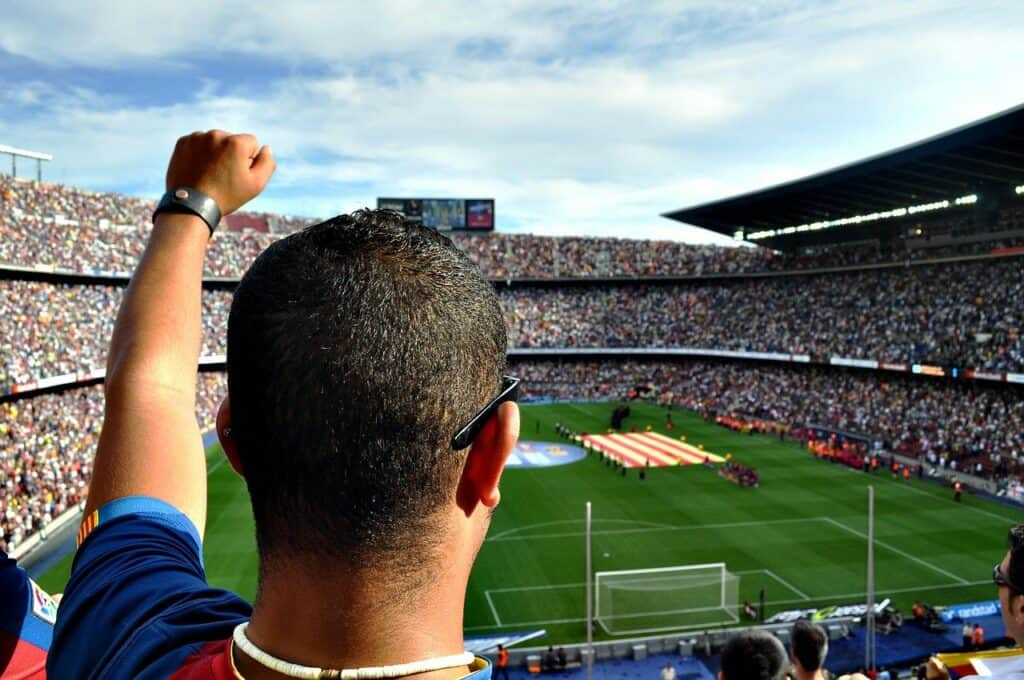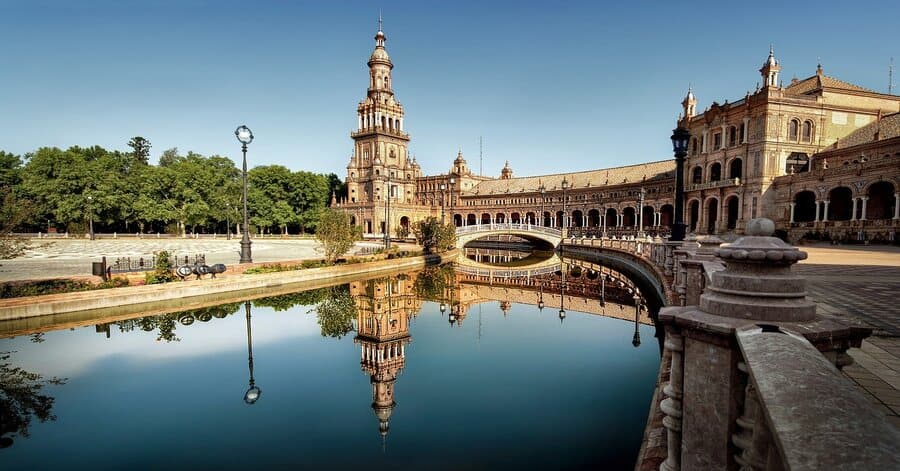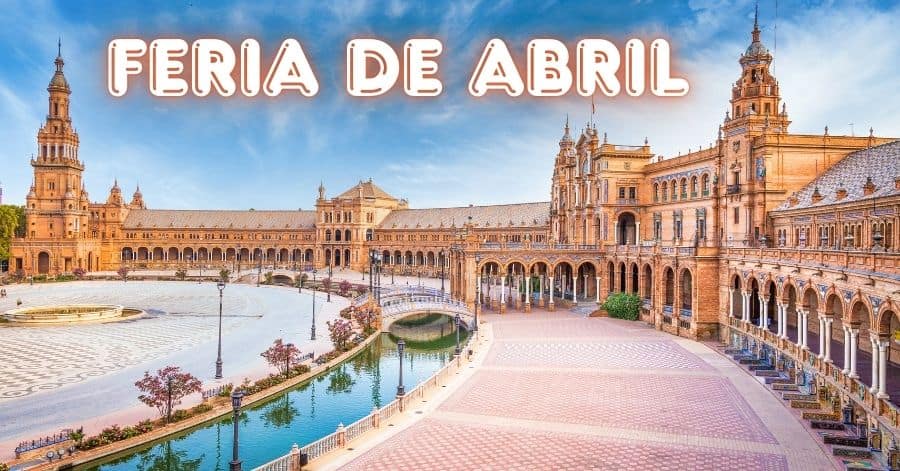As far as European cities go, Barcelona is a city that everyone is familiar with. As Barcelona is the capital city of the autonomous region Catalonia, there are many aspects of the city that are important culturally and historically that you can explore. There is also a never-ending number of things to do in Barcelona.
Barcelona was founded as a Roman City. But it quickly became the capital of the County of Barcelona in the Middle Ages. Then it merged with the Kingdom of Aragon and remained an important city in the Crown of Aragon. During those times, Barcelona served as one of the biggest centers for financial and administrative advancement. Today, tourists come from all over the world to tour the city.
Along with Paris and London, Barcelona is one of Europe’s most visited cities.
Best Attractions in Barcelona
Top 14 Sightseeing Sites in Barcelona
La Sagrada Familia Cathedral
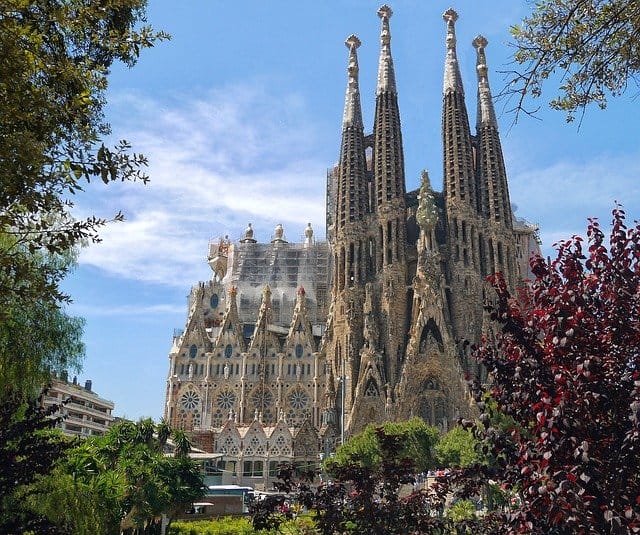
One of Barcelona’s famed architects Antoni Gaudí has had many structures under his belt. La Sagrada Family cathedral is one of them. The cathedral has been consecrated as a minor basilica by Pope Benedict XVI in 2010. Predictions say that the final construction will finish by 2030 or 2032 at the latest, spearheaded by chief architect Jordi Fauli.
Locals and tourists can visit La Sagrada Familia and explore the beautiful nave, sanctuary, and steeples for a low price of €15 – €20 (USD$17 –$24). All entrance fees go towards the cathedral’s construction.
Parque Güell
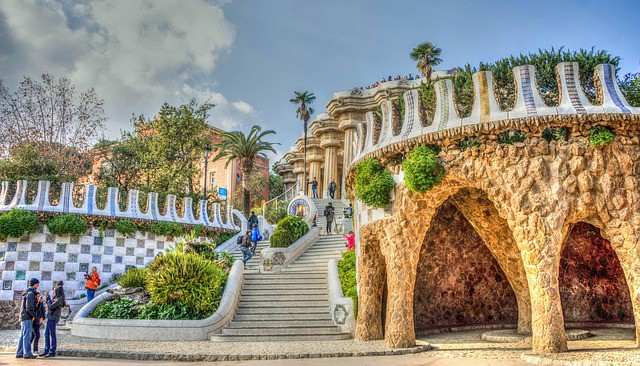
Eusebi Güell set out to build Parque Güell in 1900. Barcelona City was already a modern and cosmopolitan city with a booming economy. Parque Güell served as a display of the rich culture, economy, and infrastructure of the country. Many architects over the years have had their hand in adding their own style to Parque Güell, including Antoni Gaudí.
If you are interested in learning more about the Modernisme movement Parque Güell is a must. The program Gaudir Més offers visitors information and insight into the rich Barcelona and Catalonia regions.
The Austria Gardens
The Austria Gardens started out as plots on the residential estate. However, the plans changed and the garden transformed into a public space in the center of Parque Güell.
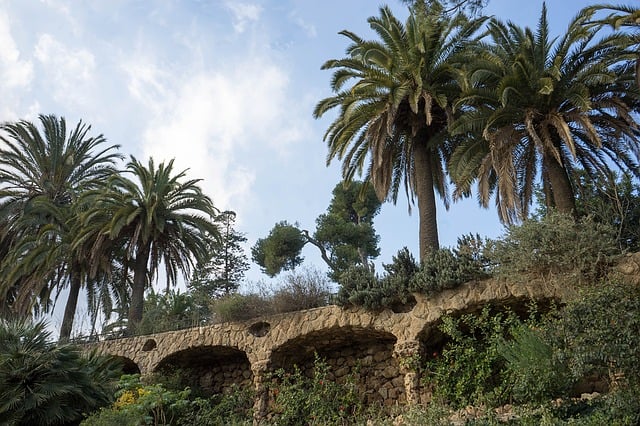
Around Austria Gardens, you will be able to see numerous palm trees. In fact, these palm trees are all over Parque Güell.
The Dragon Stairway
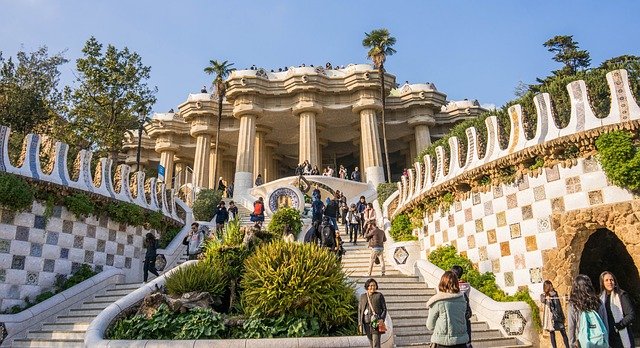
Connecting the upper area of the park to the lower area is the Dragon Stairway. With a grand design, the stairway resembles the shape of a dragon, earning its name. Here, you’ll be able to get a great snapshot of the whole area of the park.
The Two Pavillions
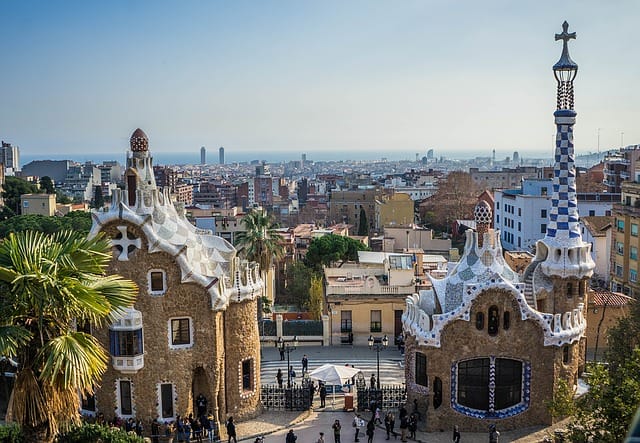
Right when you enter through the entrance of Parque Güell, you will see the most prominent pavilions in the park, including the one that leads to the Antoni Gaudí museum.
Antoni Gaudí Museum
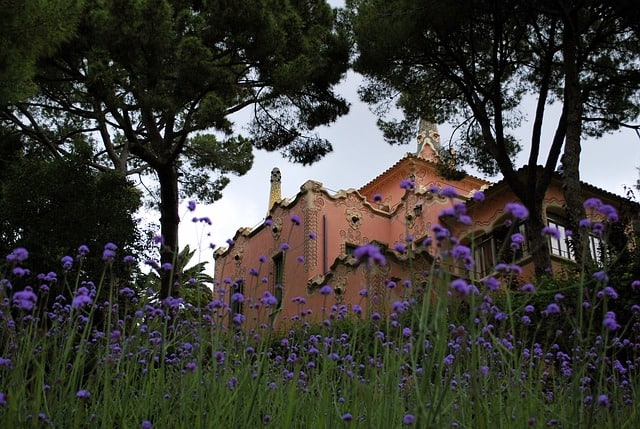
The Antoni Gaudí Museum used to be one of several houses on the residential plot that belonged to the wealthier families. In fact, Antoni Gaudí himself lived in this house. Before he moved, he was living in a house across from the Segrada Familia cathedral. For the last years of his life, however, he moved closer to the cathedral to be closer to the cathedral. After his death, contractors transformed the house into the Antoni Gaudí museum.
Nature Square (formerly known as The Greek Theatre)
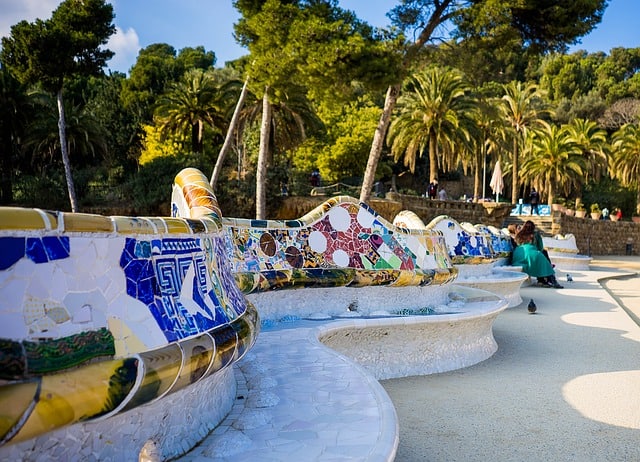
The Nature Square (Plaça de la Natura) inside Parque Güell is an esplanade, an open space that serves as an open theatre of sorts, hence the original name The Greek Theatre. Although Gaudí was a big proponent of nature, the whole esplanade was mostly artificial.
The Calvary
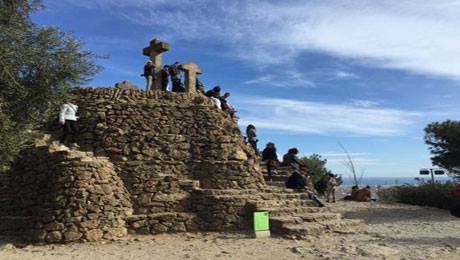
Because Spain is a Roman Catholic country, there are many displays of religions all over the country. The Calvary, a mountain top inside Parque Güell, is no exception. Modeling the very last moments of Jesus Christ, there are three crosses on top of the mountain.
Casa Batlló
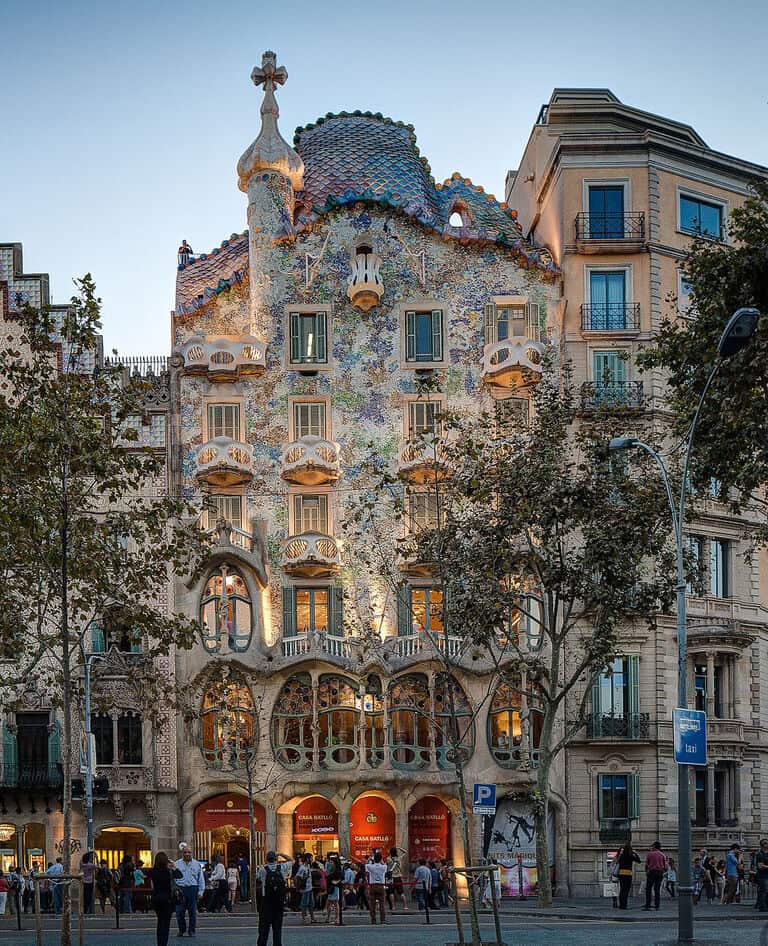
Famed architect Antoni Gaudí designed and built Casa Batlló at the center of Barcelona. Casa Batlló is one of the four houses on Illa de la Discòrdia (Manzana de la Discòrdia) meaning “Block of Discord.” Gaudí designed and built all four houses along the “Block of Discord.”
The local name for Casa Batlló is Casa dels ossos (House of Bones). As the name suggests, the building has a skeletal structure that would awe and scare visitors.
Casa Milà
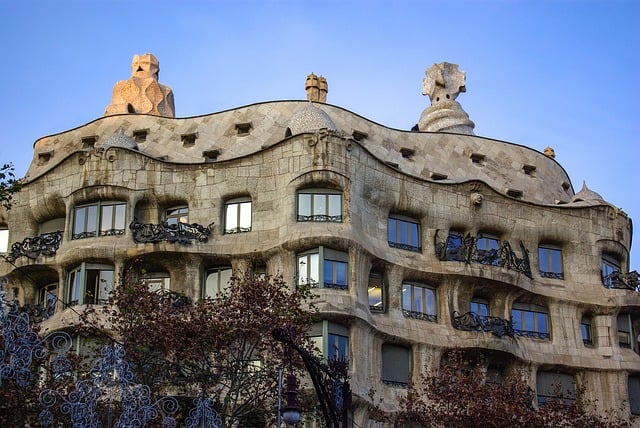
Casa Milà is another house on the aforementioned “Block of Discord” that Barcelona architect Antoni Gaudí designed and constructed. Its more popular name La Pedrera means “The Stone Quarry” and the name alludes to the house’s unconventionally rough-hewn appearance. Casa Milà was originally a commission by Pere Milà and his wife Roser Segimon. Today, the former residential house is open to the viewing public.
Camp Nou
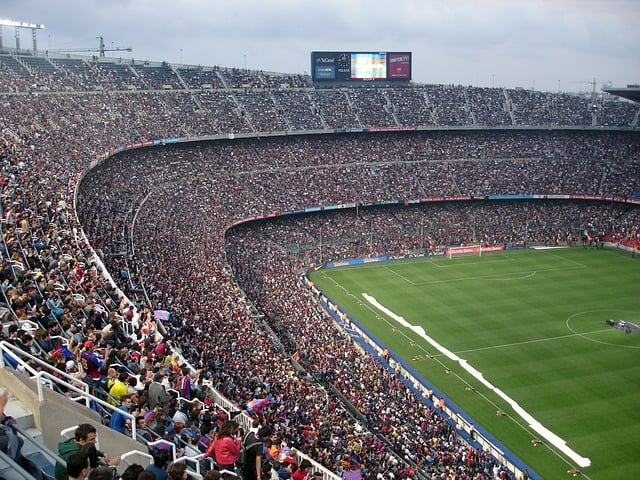
Camp Nou (“The New Field”) is the largest sports and recreational stadium in Spain and in Europe. It’s also among the four largest stadiums in the entire world with a seating capacity of 99,354. The construction of Camp Nou started in 1954 and finished in 1957. In 1957, the stadium became home to the local soccer team FC Barcelona. Fans of soccer come to watch various games, as Camp Nou often hosts a variety of soccer tournaments such as the European Cup and even the 1982 FIFA World Cup.
Barcelona City History Museum
Come to Barcelona City History Museum (Museu d ‘Història de la Ciutat) to learn about Barcelona’s history. The exhibitions span from Barcelona’s ancient Roman beginnings to the present day. With its exhibitions, the museum will convey information about the richness and depth of Spain’s history.
Fundació Joan Miró
Named after Barcelona artist Joan Miró, Fundació Joan Miró (The Foundation of Joan Miró) houses some of the most well-known artworks done by Joan Miró as well as other Catalan-based artists. As the museum was founded by Miró himself, a large majority of the collections and exhibitions are from his own repertoire but has since expanded to include the artworks of other artists as Miró wanted a place that could display and teach about the different types of work.
Palau de la Música Catalana
Built between 1905 and 1908 by Lluís Domènech I Montaner, Palau de la Música Catalana serves as a home for the Orfeó Català (Catalan Choir). Today, it stands as such an important and special part of Catalan culture and a social life that it became a UNESCO World Heritage Site. In fact, Palau de la Música is still the only concert and choir venue to be on the list of World Heritage Sites.
Labyrinth Park of Horta (Parc del Laberint d’Horta)
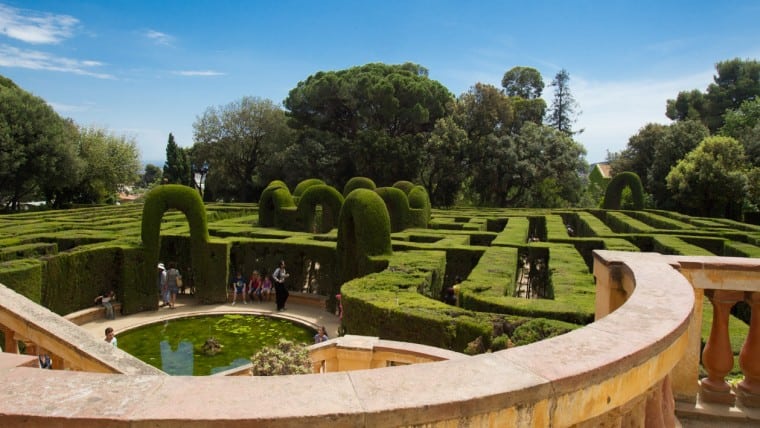
Made with wide domesticated cypress hedges, Labyrinth Park of Horta (Parc del Haberint d’Horta) is simultaneously a maze and a collection of Barcelona’s oldest conserved gardens. Visitors are encouraged to make their way through the maze slowly and while reflecting on the meaning of life.
Las Ramblas
Las Ramblas is a central street in Barcelona, Spain, and one of the city’s most prominent. With evergreen trees running down both sides, Las Ramblas connects the Plaça de Catalunya, Barcelona’s city center, and the Christopher Columbus monument. From these two points, Las Ramblas runs 1.2 kilometers or 0.75 miles.
Plaça de Catalunya
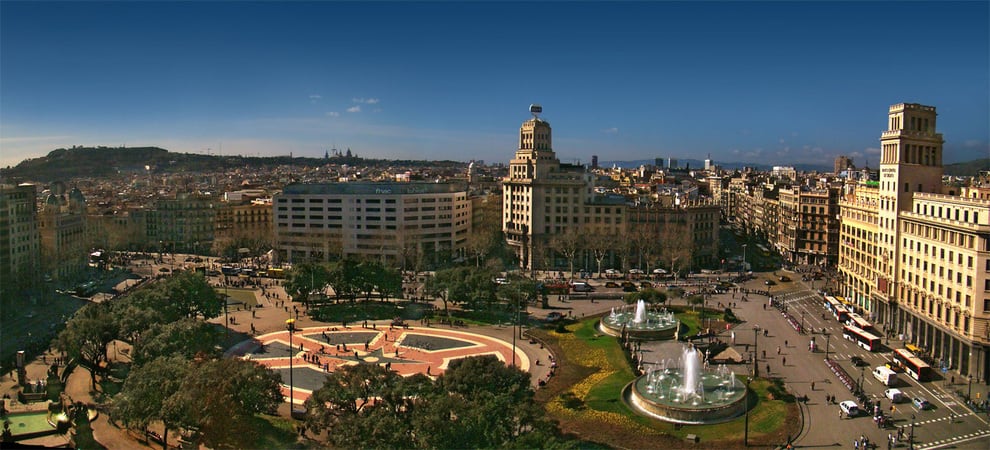
Standing at one end of the Las Ramblas street is the Plaça de Catalunya, Barcelona City’s grand square, believed to be where the old city and the district of Eixample meet. As it is the city center, Plaça de Catalunya is the intersection of many popular streets including Passeig de Gràcia, Rambla de Catalunya, La Rambla, Portal de l’Àngel, Ronda de Sant Pere, Carrer de Vergara, and Carrer de Pela, a famous shopping street for locals and visitors.
Calder Mercury Fountain
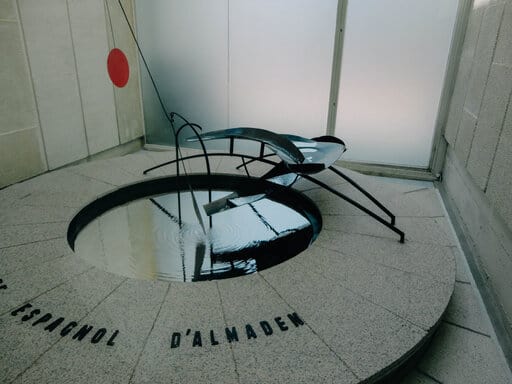
For a more daring trip, tourists can visit the Calder Mercury Fountain, located inside the Fundació Joan Miró. Donated to the museum by Joan Miró himself, the fountain still is the world’s deadliest and most beautiful work of art. The fountain still functions with mercury, but for safety purposes, it’s surrounded by glass in order to protect people who come and admire it. Fun fact! Mercury is the only substance that maintains its liquid forms at normal temperatures.
Bunkers of Carmel
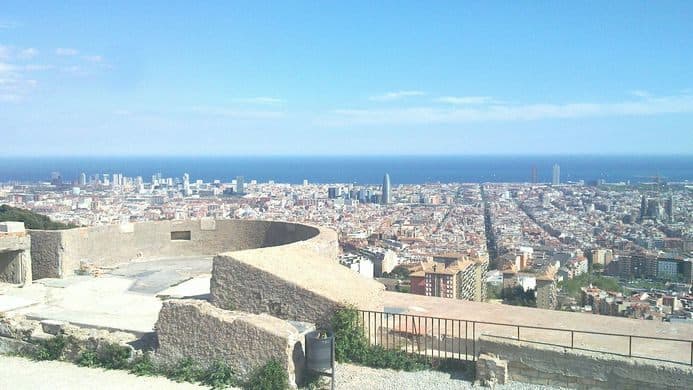
The ruins that were once defensive anti-aircraft fortified bunkers of Carmel is a great spot for those wanting to catch a glimpse of an aerial view of the city of Barcelona. Originally built as fortifications during the Spanish Civil War, the Bunkers of Carmel once housed large 105mm canons that protected Barcelona and prevented possible bombings. Recently, city officials removed the canons and renovated the area. Now, it’s one of the most popular places to visit. From here, locals and visitors get a bird’s eye vista of Barcelona.
Gràcia
If you want to get away from the urban setting of Barcelona and settle in the more local indie setting, the Gràcia neighborhood is the perfect place to visit. Its streets are lined with cafes, restaurants, and shops that offer a more homey and much less commercialized atmosphere. If you want to immerse yourself in the culture of Barcelona, why not visit Gràcia and take a stroll throughout the whole neighborhood? You are sure to discover the many jewels that make up the city of Barcelona.
Shopping in Barcelona
La Boqueria
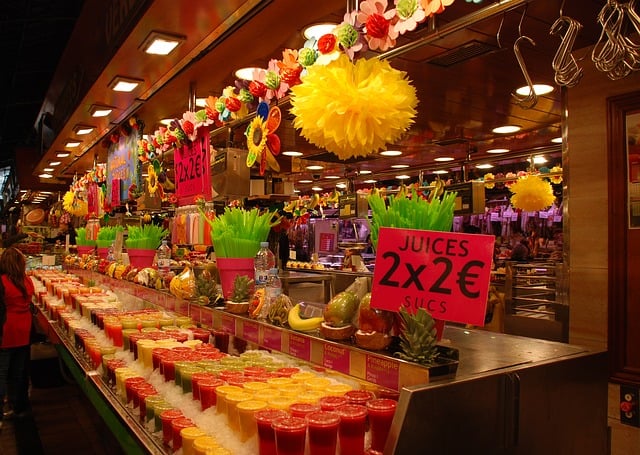
Next to Barcelona’s La Rambla street and Liceo, the city’s opera house, La Boqueria is an open-air market that houses stalls and vendors selling mostly meat. From the very beginning of the market’s conception, both meat and fish have been sold here; the kinds of meat ranged from beef, pork, and even goat. In fact, the name of the marketplace came from the Calatan word boc meaning “goat.” Today, vendors at La Boqueria sell a variety of different kinds of things, food and otherwise.
Carrer de Pela
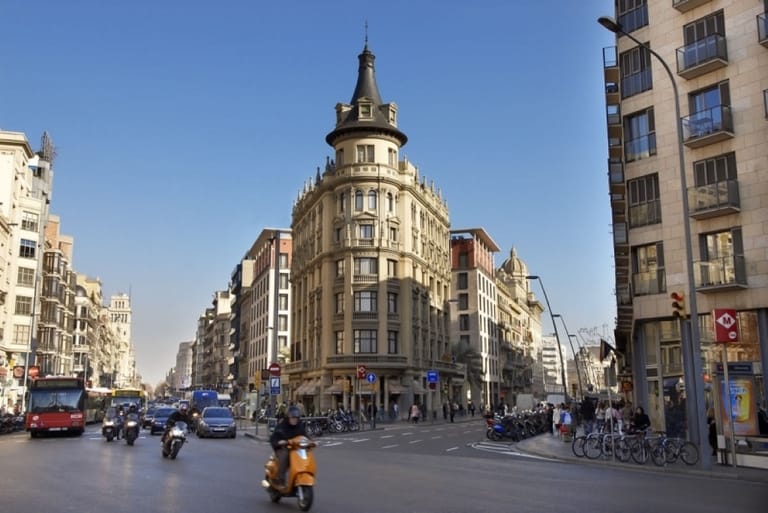
As the main shopping district in Barcelona, Carrer de Pela gets overwhelmed by tourists and locals regularly, especially during the day. Here, you’ll find numerous shops selling all kinds of products including souvenirs, clothes, food, and drink. You’ll also see many buildings at and around Carrer de Pela that feed into the rich architecture of Barcelona and Spain as a whole.
Eating & Drinking in Barcelona
For a lot of people, Spanish cuisine is almost synonymous with el marisco or seafood. As the country of Spain is right next to the Meditteranean Sea, it’s no wonder why. Like its neighbors along the Mediterranean, Spain has incorporated seafood into its dishes. Historically, Spanish cuisine also has used heavy amounts of olive oil and the prominent herbs include oregano, thyme, parsley, and rosemary. Rice, garlic, chicken, beef, lamb, pork, and veal are favorite ingredients in Spanish cuisine.
Paella
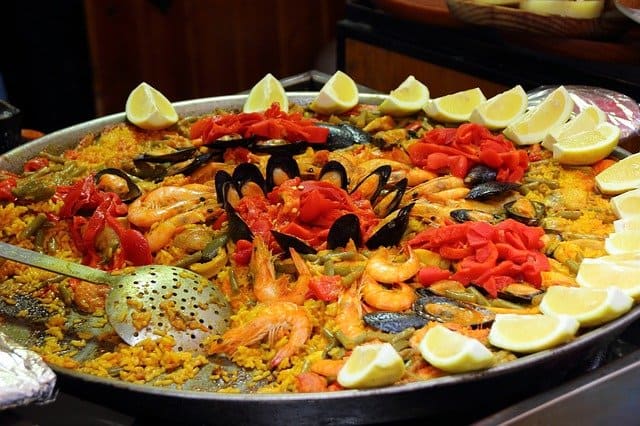
Probably the most famous of Spanish dishes, the paella is a rice-based dish that consists of meats, vegetables, paprika, and saffron. The most famous rendition of the dish is the seafood paella. Today, the paella has made its way into the global landscape, making it the most famous Spanish food export.
La Bomba
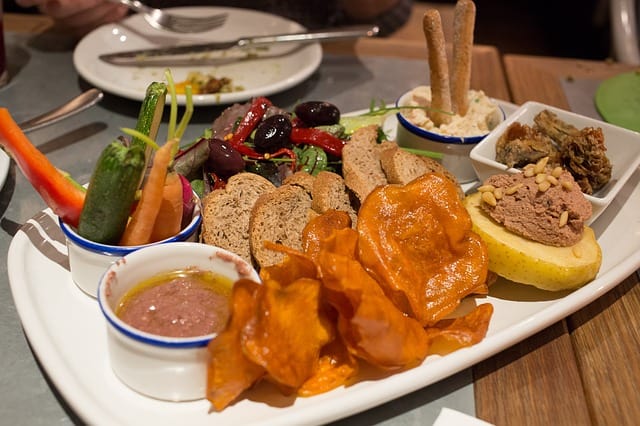
Aside from seafood, another kind of food that Spanish cuisine is famous for is the tapa, a typically bite-sized delicacy. At a traditional Spanish restaurant, tapas are served 3 or 4 to a plate and can range from cheap to pricey.
One such tapa is La Bomba. La Bomba comes up among the rest as the most quintessentially Spanish tapa. Usually stuffed with seasoned ground pork and coated with breaded crumbs, La Bomba is served with two sauces: a white garlic sauce and a red sauce that gives the dish a spicy and explosive taste.
Esqueixada de Bacalao
Esqueixada is a summertime ceviche salad whose freshness and flavor rivals no other. Famous in Spain and Peru, ceviche is a plate of raw fish marinated in lemon or lime juice. Specifically, Esqueixada de Bacalao is made with “bacalao” (or raw salted cod) and is typically served with diced tomatoes, onions, and black olives.
Jamón Ibérico
The paella is easily Spain’s number one food export, but another famous Spanish food product is the jamón ibérico, or “acorn-fed ham.” This special ham comes from pigs that have been fed only on acorns, making the meat sweet, tangy, and overwhelmingly delicious. Although jamón ibérico is on the more expensive side, it is definitely once in a lifetime must try.
Pa amb Tomàquet
Italy has the bruschetta and Spain as the Pa amb Tomàquet. Similar to the bruschetta, Pa amb Tomàquet consists of bread that has been rubbed with garlic and is served with olive oil and tomato sauce. Pa amb Tomàquet is typically served as an appetizer, but it can also be eaten on its own.
Gazpacho
Hailing from the Andalusia region of southern Spain, the gazpacho is a chilled soup. Like many other dishes from Spain, the gazpacho is well-known globally and is even nicknamed “chilled tomato soup.” However, it is more than just tomato soup that has been chilled. The traditional recipe calls for raw, blended vegetables which may include tomatoes.
Barcelona has much to offer the rest of the world in the way of history, art, culture, and cuisine. Visitors who explore the city will certainly feel and depth and weight of Barcena’s past, present, and future.
